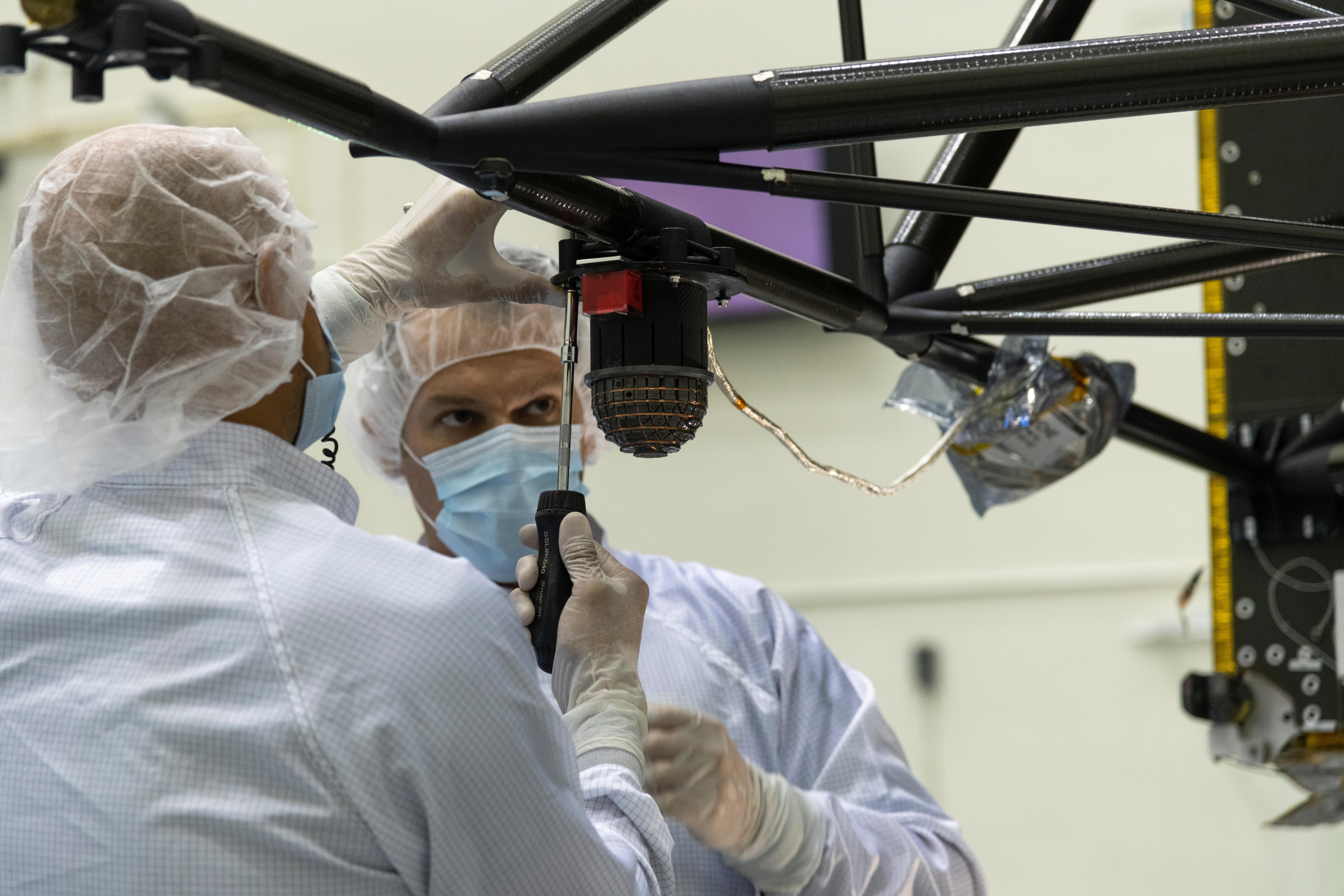
|
Psyche’s Magnetometer Integration
- Click the image above for a larger view
- Full-Res JPEG (8256 x 5504) (7.3 MB)
- Full-Res TIFF (8256 x 5504) (104.0 MB)
Caption:
Engineers at NASA's Jet Propulsion Laboratory in Southern California integrate the magnetometer instrument into the agency's Psyche spacecraft on June 28, 2021.
Psyche, set to launch in August 2022, will investigate a metal-rich asteroid of the same name, which lies in the main asteroid belt between Mars and Jupiter. Scientists believe the asteroid could be part or all of the iron-rich interior of an early planetary building block that was stripped of its outer rocky shell as it repeatedly collided with other large bodies during the early formation of the solar system.
Scientists know that the asteroid doesn't generate a magnetic field the way Earth does; but if Psyche had a magnetic field in the past, that magnetic field could still be recorded in Psyche's material today. With sensors mounted onto a 6-foot (2-meter) boom, the magnetometer can determine if Psyche is still magnetized. If so, that would confirm that the asteroid is part of the core of a planetesimal, the building block of an early planet. This photo shows one of the magnetometer's sensors.
Background Info:
Arizona State University in Tempe leads the Psyche mission. JPL is responsible for the mission's overall management, system engineering, integration and test, and mission operations. Maxar Technologies in Palo Alto, California, supplied the spacecraft's high-power solar electric propulsion chassis.
For more information about NASA's Psyche mission, go to: http://www.nasa.gov/psyche or https://psyche.asu.edu/
Cataloging Keywords:
| Name | Value | Additional Values |
|---|---|---|
| Target | 16 Psyche | |
| System | Main Belt | |
| Target Type | Asteroid | |
| Mission | Psyche | |
| Instrument Host | Psyche | |
| Host Type | Orbiter | |
| Instrument | Magnetometer | |
| Detector | ||
| Extra Keywords | Color, Magnetosphere | |
| Acquisition Date | ||
| Release Date | 2021-10-04 | |
| Date in Caption | 2021-06-28 | |
| Image Credit | NASA/JPL-Caltech | |
| Source | photojournal.jpl.nasa.gov/catalog/PIA24893 | |
| Identifier | PIA24893 | |
